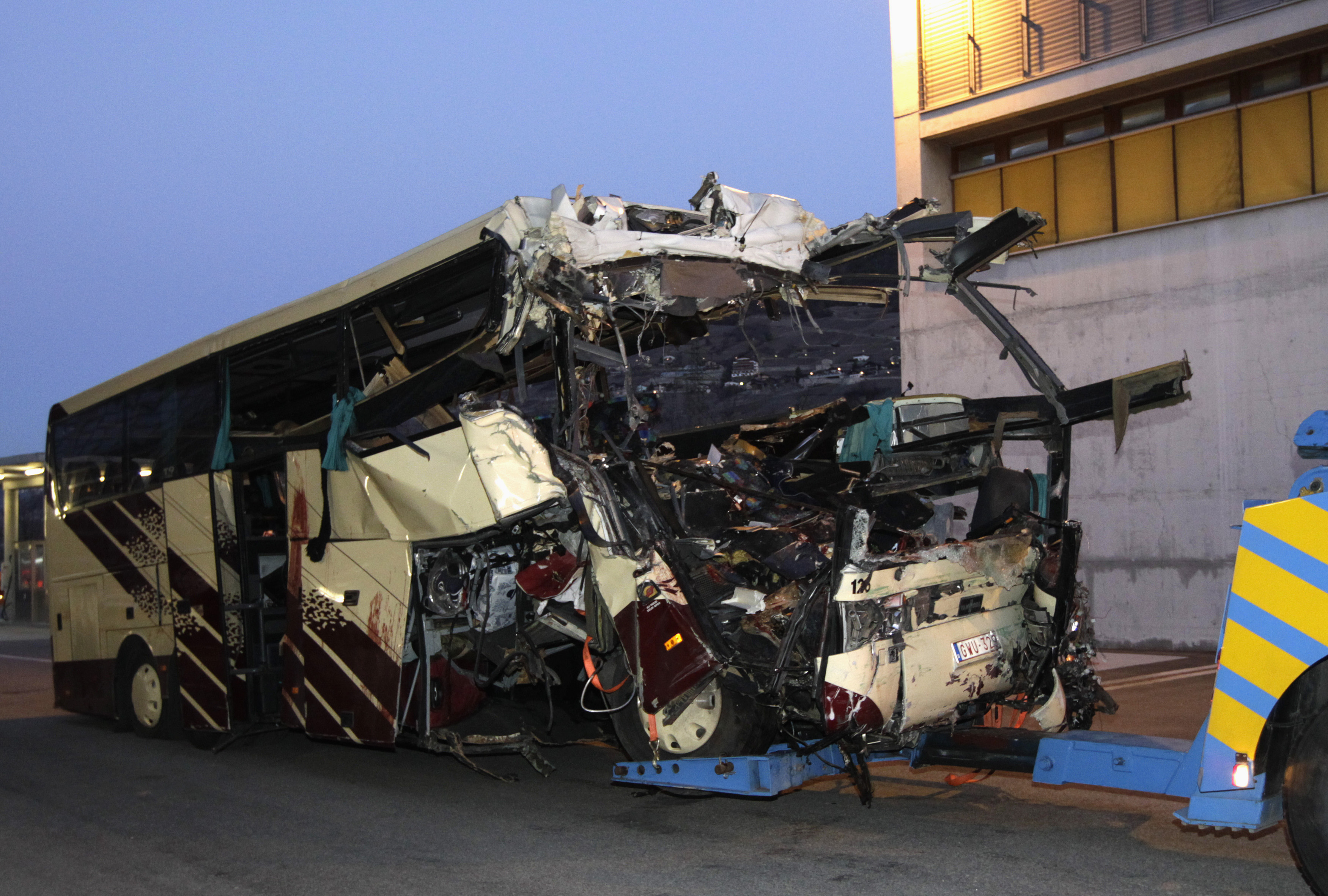
Driver linked to horror coach crash

A preliminary report into a coach crash which killed 28 people, mainly Belgian schoolchildren, in southern Switzerland in March indicates that the cause was linked in some way to the driver.
The report presented on Friday by Olivier Elsig, the public prosecutor of canton Valais where the accident occurred, ruled out the involvement of a third party, shortcomings in the road surface or the tunnel infrastructure, excessive speed, alcohol or technical problems with the vehicle.
It said investigations were now concentrating on the driver, who was one of those killed when the coach, carrying a total of 52 passengers, slammed into the end wall of an escape bay in a motorway tunnel on the A9 motorway between Sierre and Sion.
It is hoped to have the results of toxicology tests on the driver before the end of summer. However, it is already known that he had not drunk any alcohol.
“The ideal thing would be to discover the exact cause. Perhaps we never shall, but we are definitely getting closer,” Elsig told journalists in Brussels.
Elsig presented the conclusions of his report to the parents of the dead children before meeting the media.
The crash on March 13 left a total of 28 people dead – 22 of them children. Another twenty-four children were injured in what was one of the worst road accidents in Switzerland for 30 years.
The passengers were from two Belgian schools, one from Heverlee, near Brussels and the other from Lommel, near the Dutch border. Seven of the dead children were from the Netherlands, but attended the Belgian school. All the children were around 12 years old.
They were on their way home from a skiing holiday in the Val d’Anniviers.
The report said the 34-year-old driver had taken over the wheel from his older colleague shortly before the crash occurred. The maximum speed permitted in the tunnel was 100 km/hr, and the coach was travelling at between 99 and 101 km/hr.
It touched the right curb about 75 metres before site of the collision, travelled along it and crashed within less than three seconds. There were no significant indications that the driver had tried to change direction or to brake.
Shock
The accident triggered a wave of emotion in both Belgium and Switzerland.
More than 200 people were involved in the rescue operation at the accident scene, including 15 doctors, 30 police officers and 60 fire officers. It took more than eight hours. The front of the bus was badly damaged, preventing people from getting out.
The vehicle was equipped with safety belts and Belgian officials said that the coach company had an excellent reputation and the drivers appeared to have kept to driving and rest regulations.
In the aftermath of the crash questions were raised about the escape bays in motorway tunnels. In Switzerland they are built with their walls at 90-degree angles to the road, and it was suggested that had they been at a wider angle, the coach would not have slammed into it with such force.
A working group was set up to examine tunnel safety, and is due to produce its conclusions in two or three weeks.
A spokesman for the Federal Roads Office said the experts had not yet been given access to the video monitoring tapes of the tunnels which they need in order to be able to finalise their report.
The spokesman pointed out that although wide-angled walls are good for heavy vehicles, they could be more dangerous that right-angled ones for cars and motorbikes, which could find themselves bounced over to the other side of the tunnel if they crashed into one.
The coach accident in the Valais motorway tunnel was the worst since a crash in Pfäffikon near Zurich in 1982 which claimed 39 victims.
In the past few years:
June 2010: a Canadian couple died in Reckingen, Valais. 28 others were injured, four seriously.
October 2008: an accident on the Italian side of the great St Bernard Pass involving a coach full of Neuchâtel Juventus football fans resulted in two deaths and 26 injuries.
September 2006: Nine people died in a blaze in the Viamala tunnel in canton Graubünden after a bus carrying a local ice hockey team was in collision with a car.
April 2005: 13 people died in an accident on the Great St Bernard Pass near Orsières when a coach crashed off the road into a ravine.
Another serious accident occurred in 2001 in the Gotthard tunnel, after a truck caught fire after losing control. Eleven people died, mainly as a result of smoke inhalation.

In compliance with the JTI standards
More: SWI swissinfo.ch certified by the Journalism Trust Initiative































You can find an overview of ongoing debates with our journalists here . Please join us!
If you want to start a conversation about a topic raised in this article or want to report factual errors, email us at english@swissinfo.ch.